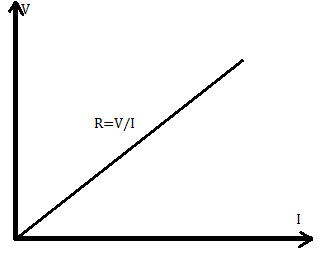
From Ohm’s law,
The SI unit of resistance is ohm.

It is defined as the resistance offered by a cube of a material of side 1 m when current flow perpendicular to its opposite faces.
Resistivity is a measure of a material’s ability to resist the flow of electric current.
Materials with low value of resistivity are good conductors of electricity.
Since insulators resist electric current more than conductors, its resistivity is more.
Resistivity could be deduced as follows:
(i) The resistance of a given conductor is directly proportional to its length. That is:
(ii) The resistance of a given conductor is inversely proportional to its area of cross-section. That is:
By combining the relations (1) and (2), we get:
| Metals | Resistivity |
|---|---|
| Silver | |
| Copper | |
| Aluminum | |
| Wood | |
| Air | |
| Teflon |
Heating elements (or heating coils) of electrical heating appliances such as electric iron and toaster, etc., are made of an alloy rather than a pure metal because
(i) The resistivity of an alloy is much higher than that of pure metal, and
(ii) An alloy does not undergo oxidation (or burn) easily even at high
temperature. Nichrome alloy is used for making the heating elements of electrical appliances.